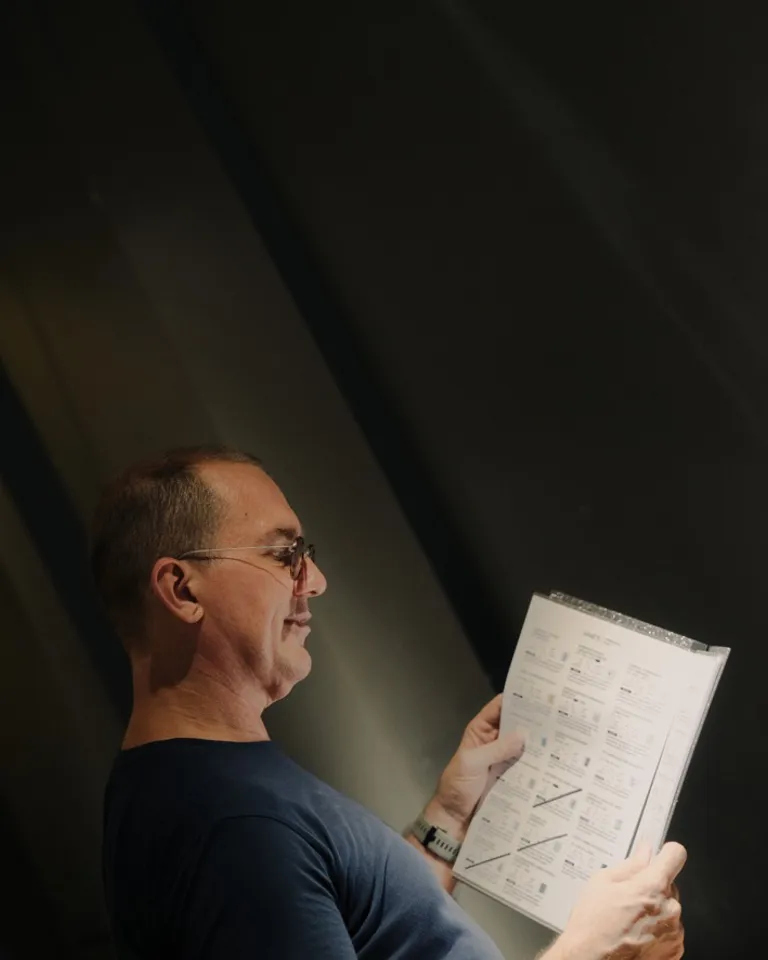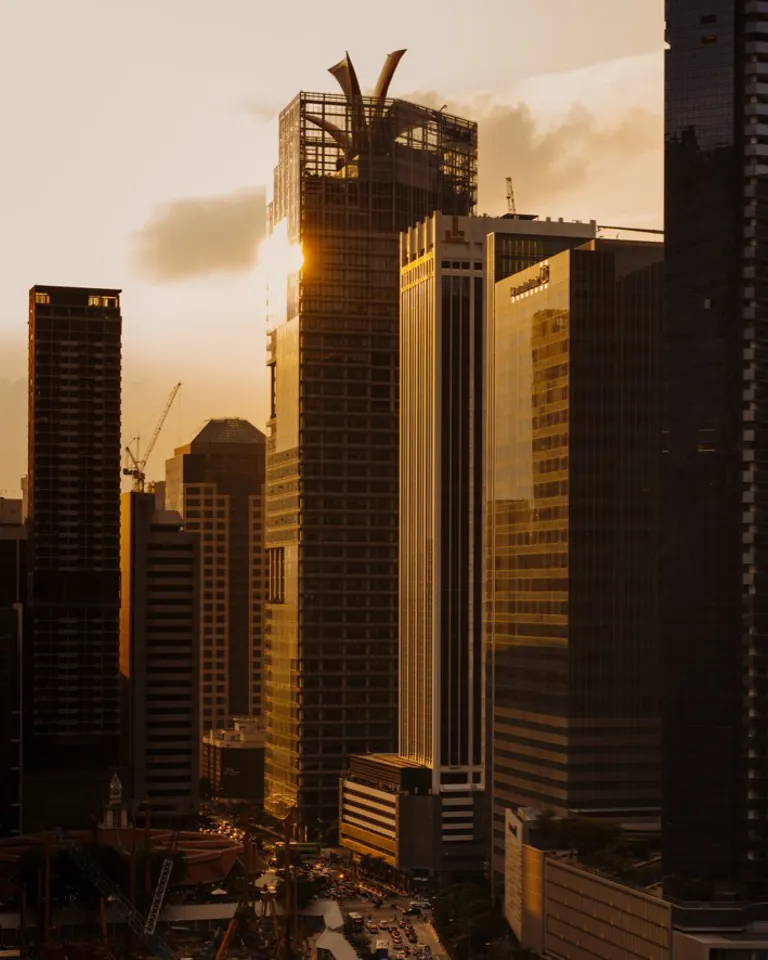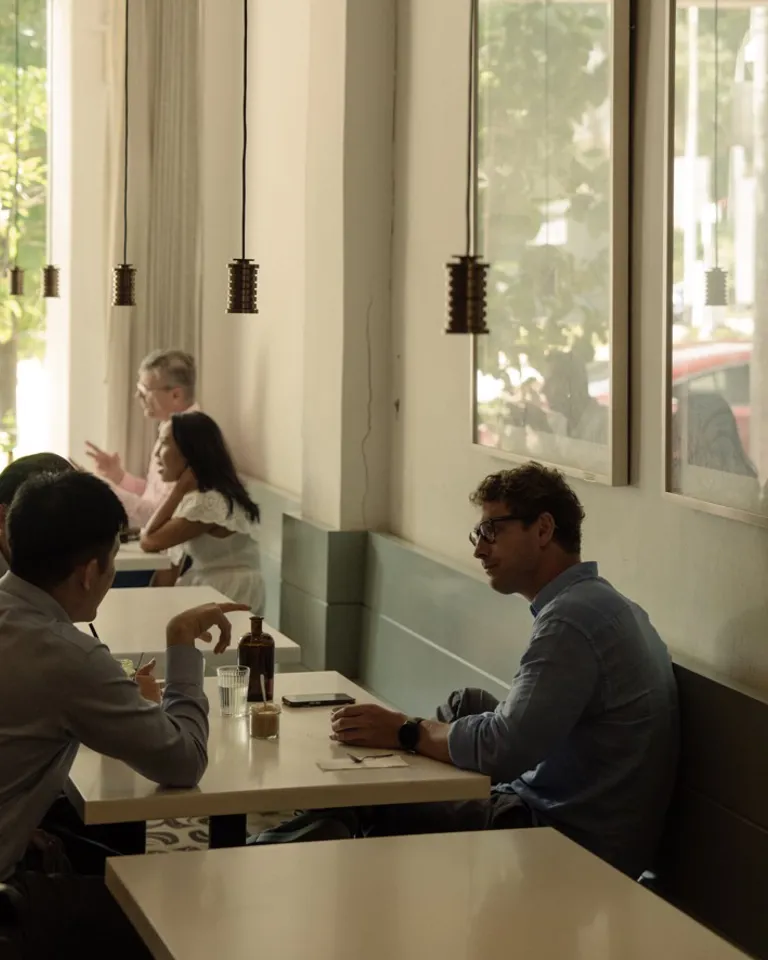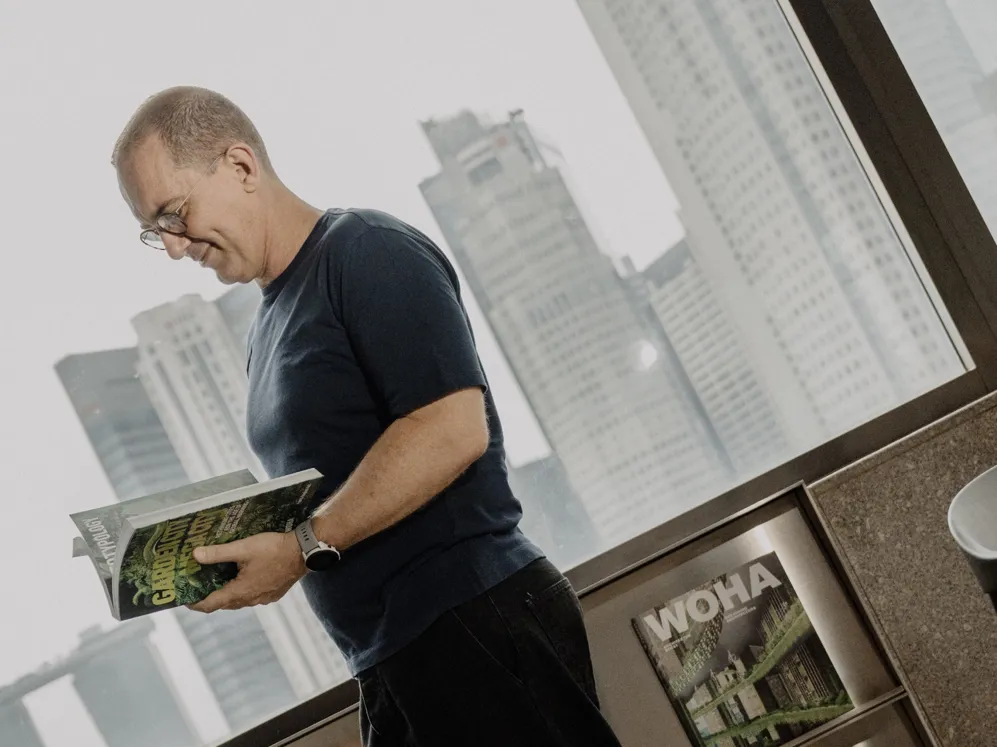
Words Allison Reiber DiLiegroImages Khoo Guo Jie
It was the late 1980s, Southeast Asia was booming, and Richard wanted to be a part of it. He arrived in 1989 and “it felt like home from the beginning.” Today, Richard is the co-founder of Singapore-based WOHA Architecture, leading residential and commercial projects across Asia. “You could say the common thread in all my work is the constant search for meaning, authenticity, and good, lasting design that surpasses any trend or fashion.”
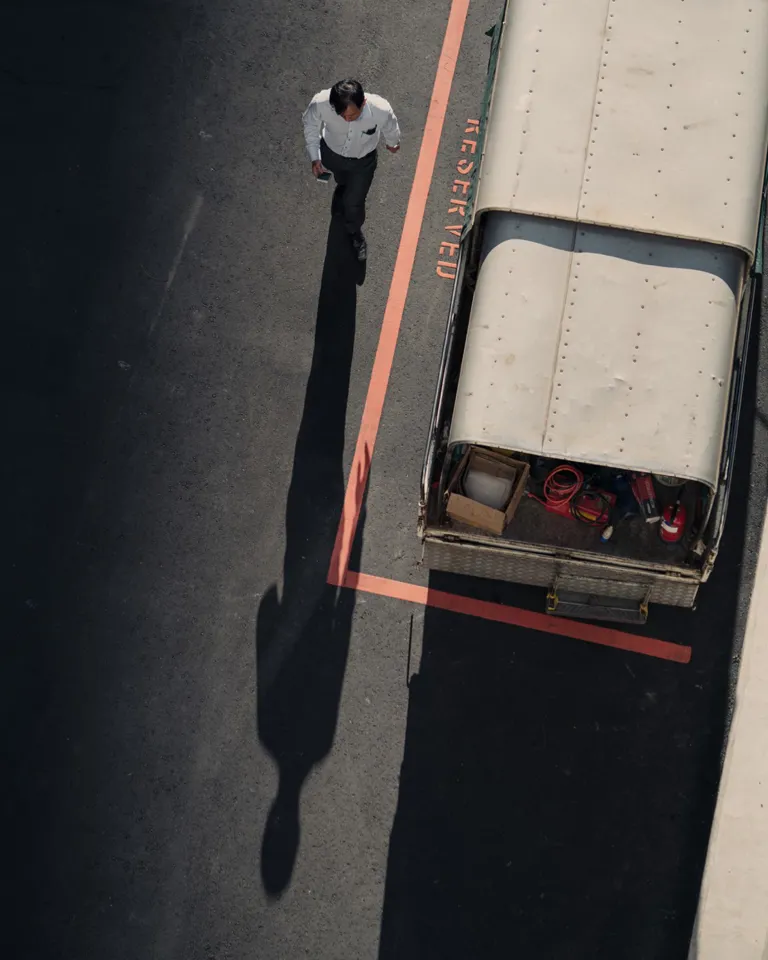
The 21 Carpenter project was flush with stories to excavate—it’s set in a 1930s-era remittance house where Singaporean immigrants would send money to their families overseas. While Richard was curious about the “architectural drama” of an old shophouse, “I wanted to steer away from the typical cues of stuffy heritage hotels that were conceived before us,” he says. Instead, he set out to build something contemporary, approachable, and reflective of today’s Singapore.
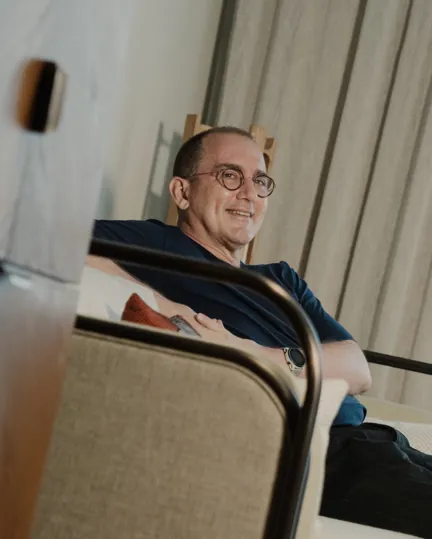
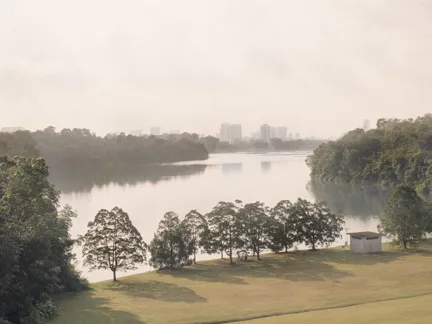
My earliest memories of Singapore stem from when I was a child, visiting my aunt who lived on Gallop Road next to the Botanical Gardens. She lived in a colonial house, surrounded by nature. I remember the feeling of the warm breeze, the exotic food, and the sights and sounds of animals roaming throughout, with monkeys to the left of me and cobras to the right. It was quite a romantic first taste of Singapore.
I love the pragmatic mindset, the live-and-let-live attitude. Which is surprising of course, as Singapore is branded as a rule-based society. But in actuality, people are rather relaxed in real life!
You can find some of the oldest forests here that are just teeming with wildlife! In the Central Catchment Nature Reserve, you can find the endangered mouse deer, which is thankfully growing again in population. Although Singapore is known to be one of the most futuristic cities in the world, greenery has increased in the last 20 years.
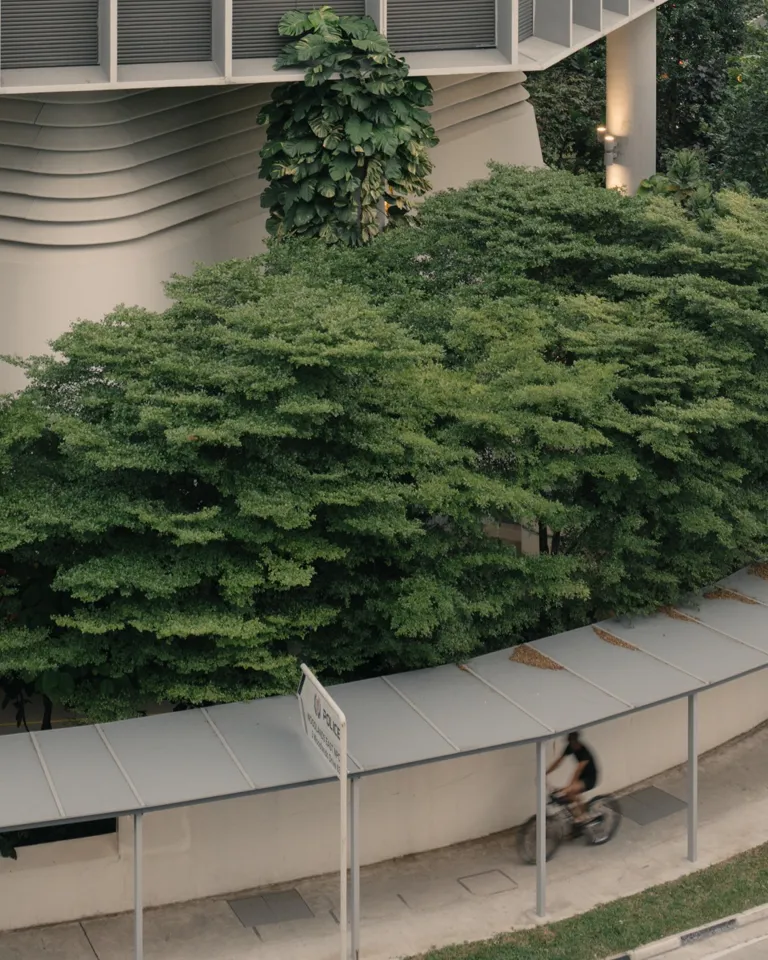
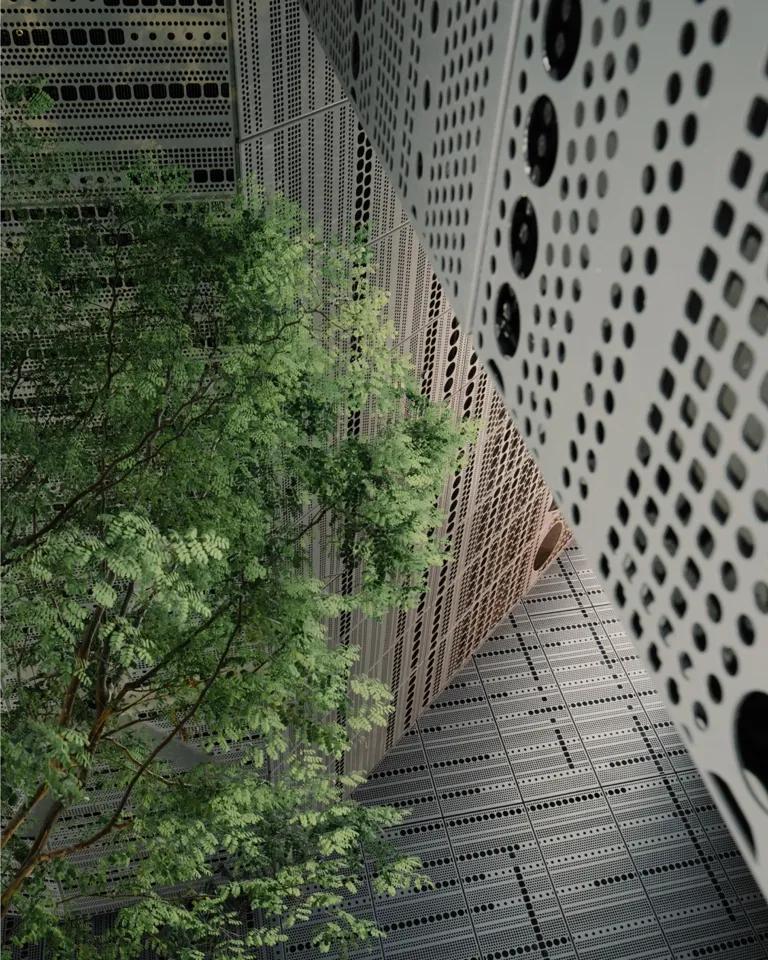
Biophilic design is a hallmark of Singapore's architecture—and it's green cityscape—and is a specialty of Richard's firm, WOHA Architecture.
Enthusiastic. Cheerful. Curious.
In its late 19th- and early 20th-century heyday, Chinatown was a dense visual field of text. Every building was adorned with signs identifying its owners, merchants, and tenants. Both the form and content of writing is something that interested me.
The most striking story we discovered at 21 Carpenter was the discovery of the old remittance letters sent by illiterate workers back to their families. Since they could not write, they paid classically trained writers to convey their feelings of love and longing in the form of Chinese proverbial poems. You’ll find extracts of these poems in both English and Chinese on 21 Carpenter’s façade.
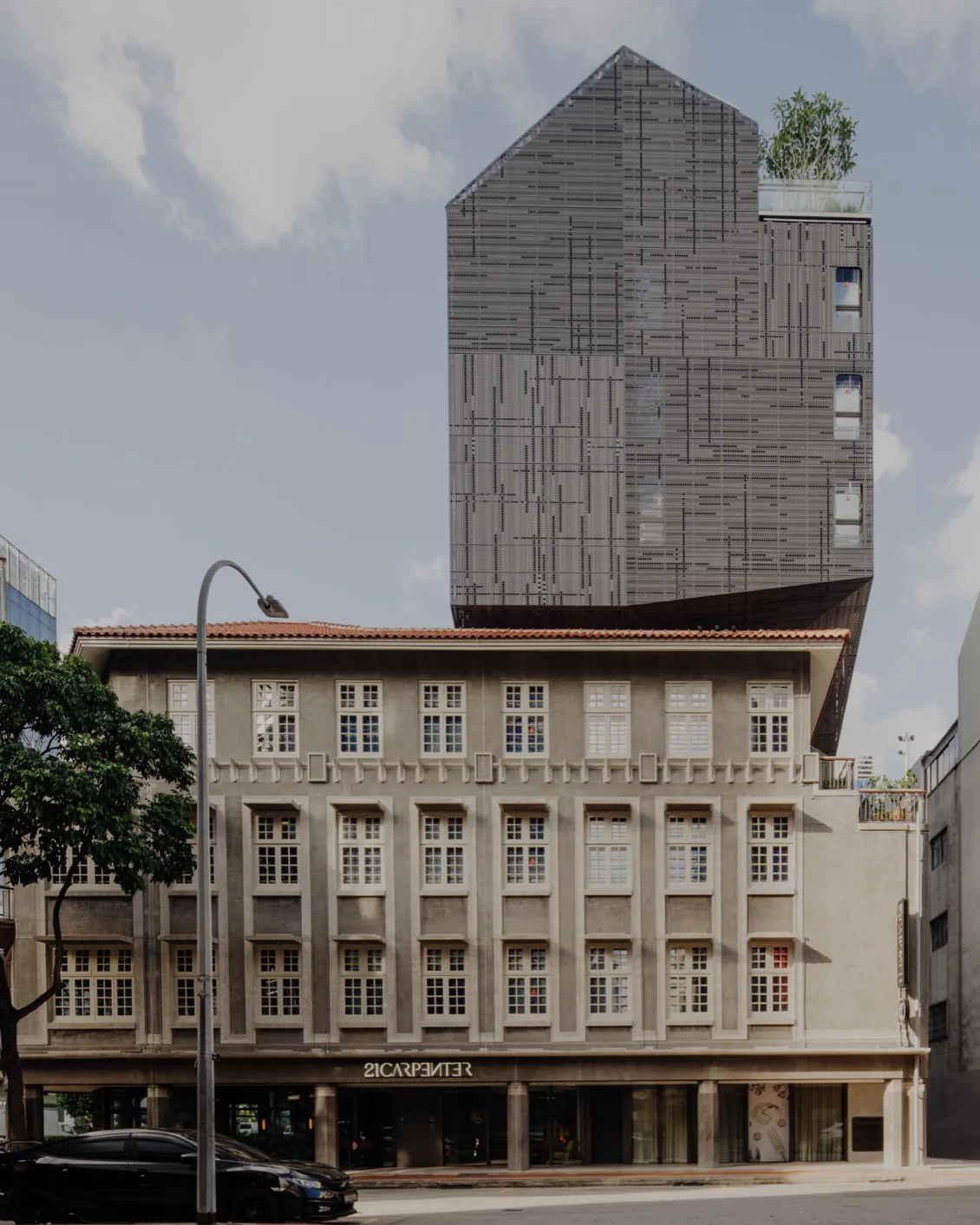
The landmark remittance house sits in front of a contemporary extension, creating a dialogue between Singapore's past and present.

From the building's past life, extracts of poems sent home to loved ones feature on 21 Carpenter’s façade.
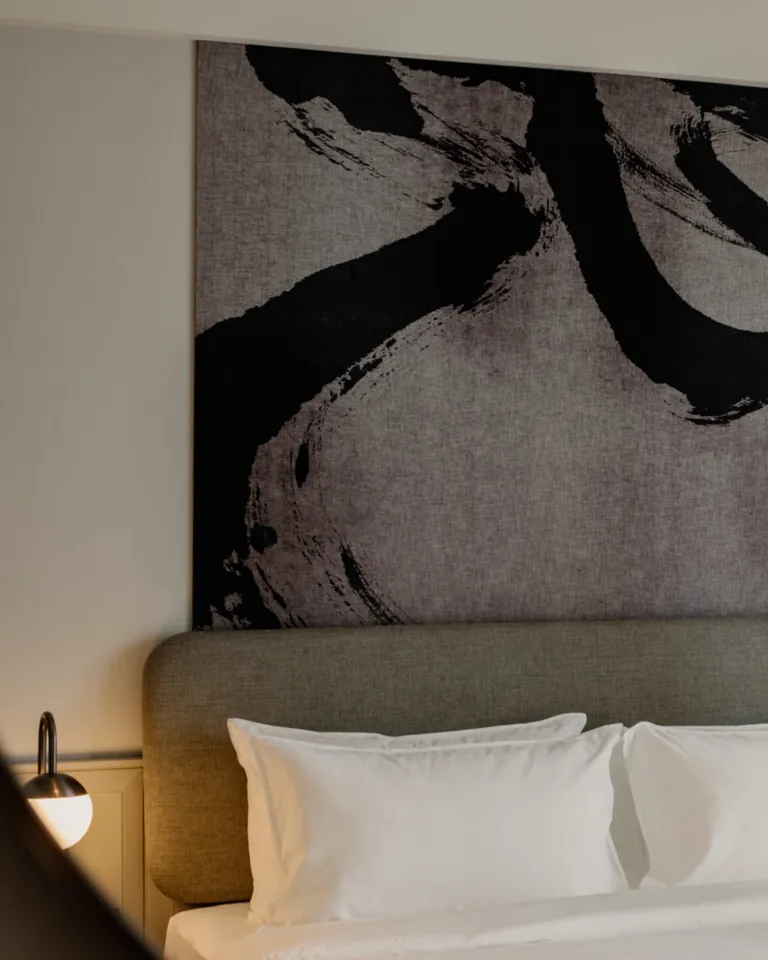
Artwork in guest rooms show fragments of Chinese characters taken from the poems of the old letters.
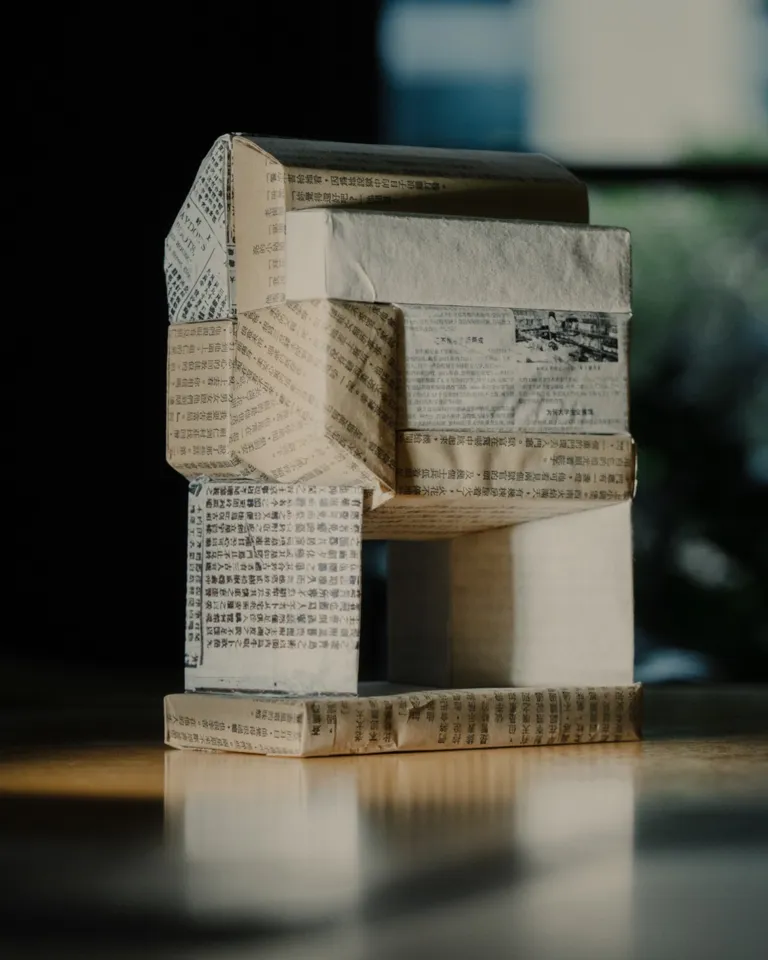
A model of 21 Carpenter made out of heritage paper sits in the WOHA Architecture office.
Yes, the headboards in the guest rooms show fragments of the Chinese character for “home.” The carpets in the hallways leading to the rooms feature an abstracted Chinese calligraphy-inspired pattern.
I love how abstract they are. When stripped of meaning, it forces the viewer to be released of any requirements to be logical and to merely notice something, to feel something. It’s not an urgent aspect of the room’s design, but it’s important. My own art practice has helped me break away from the rationality of architecture and incorporate narratives and emotions.
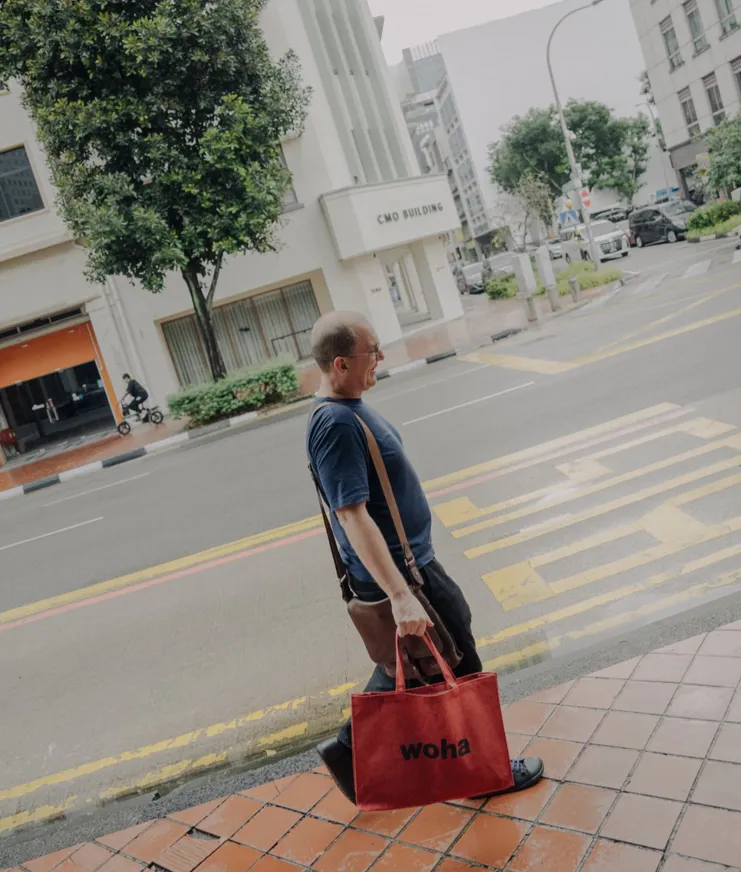
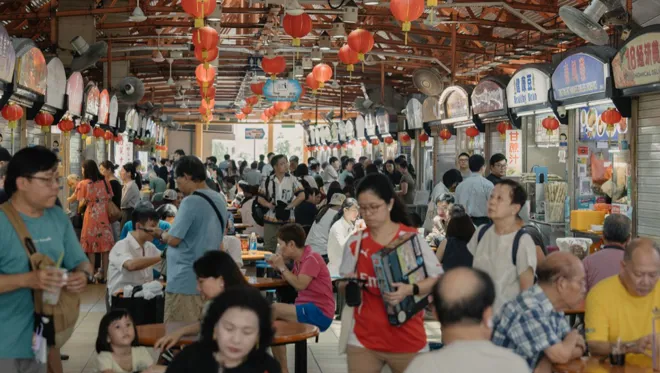
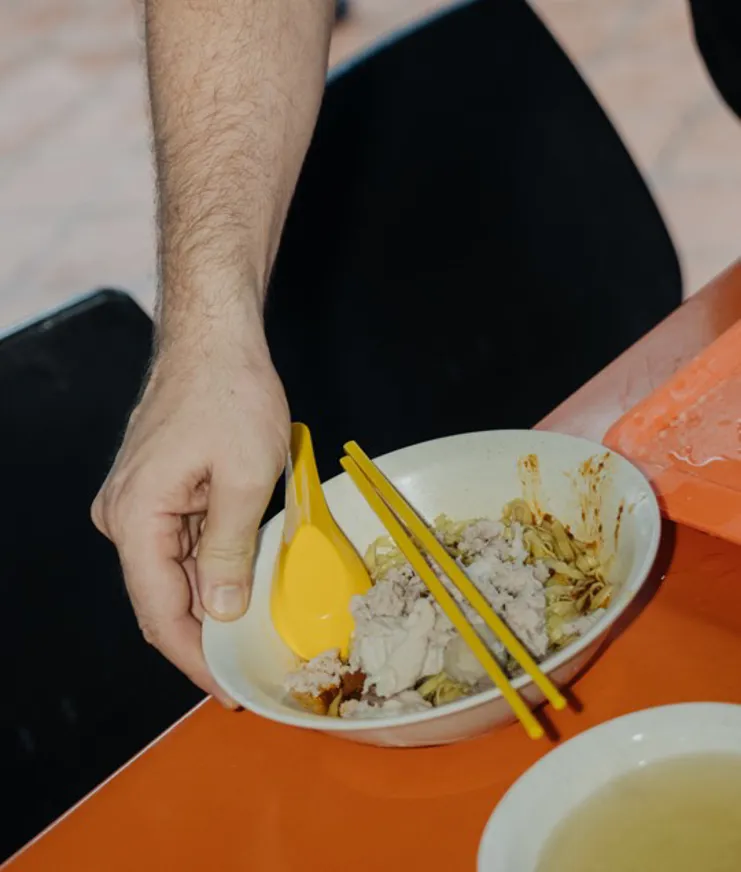
Mee pok, Richard's favorite dish, is a signature of Singapore street food.
A small, Japanese sake bar and restaurant around the corner of our office. They have one of the best sake menus you can find in Singapore. Your rarely drink the same sake twice. I was once told the sake is like a flower: you can enjoy its beauty in a fleeting moment, but once that moment’s passed you’ll never enjoy that same flower again.
Serves a classic mee pok that encapsulates Singapore street food. It's a single-dish specialty that is made from fresh, well-prepared ingredients, cooked on demand to perfection and incredibly affordable.
A Melbourne-style café that does the best coffee in the neighborhood and has a beautiful courtyard that we helped design. It’s also one of the few unrestored shophouses in the area where you can see the beautiful pre-cast spiral stairs which used to be such a feature of Singapore’s back lanes.
A tiny Japanese-style café with just a few menu items done exquisitely well. Jane, the proprietor, gives every customer her personal attention.
A great place to get an overview of the district and the Singapore River. It has amazing old trees that date from pre-colonial times and archeological remains from the Majapahit Empire. It’s great for a morning walk before it gets too hot.
A short stroll down the river and is a treasure trove of artifacts from Chinese, Malay and Indian cultures, Singapore’s history as a trading port, and contemporary interpretation of these cultures in design.
Right next door to our office. It’s received numerous awards as one of the top cocktails bars in Asia.
